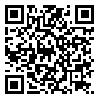BibTeX | RIS | EndNote | Medlars | ProCite | Reference Manager | RefWorks
Send citation to:
URL: http://jdisabilstud.org/article-1-3077-en.html
2- Assistant Professor of Psychology, Rudehen Unit, Islamic Azad University, Rudehen, Iran
3- Associate Professor Faculty of Psychology, North Tehran Branch, Islamic Azad University, Tehran, Iran University, Tehran, Iran
4- Professor of Brain and Nervous Diseases, Shahid Beheshti University of Medical Sciences and Health Services, Tehran, Iran
Abstract
Background & Objectives: Epilepsy is a common neurological disorder characterized by frequent and spontaneous seizures that are poorly controlled with current medications. This disease can occur in any age, race, and social class. One of the psychosomatic diseases that can occur in patients with epilepsy is somatization symptom disorder. The factors affecting somatization symptoms in these patients may include alexithymia, childhood trauma, and perceived social support. In psychology, the occurrence of any phenomenon is associated with several factors; perhaps anxiety, depression, and stress are among the factors that can directly or indirectly affect the relationship between physical symptoms and alexithymia, childhood trauma, and perceived social support. So, this study aimed to provide a structural model of physical symptoms based on alexithymia, childhood trauma, and perceived social support with the mediation of depression, anxiety, and stress in patients with epilepsy.
Methods: This study was descriptive in terms of its application and correlational in terms of method. A total of 260 required subjects were estimated for this study. In this research, there were 7 paths, 3 covariance errors, 11 indicator errors, 2 endogenous errors of mediating variables, and 3 subscales of mediating variables. Thus, there are 26 parameters, and 10 subjects were needed for each parameter. We used simple random sampling; the samples were selected by lottery from the list of patients who are members of the Iranian Epilepsy Association. The inclusion criteria were as follows: informed consent, the right to withdraw from the continuation of the research, and the ability to read and write. The exclusion criterion was not completing the questions of the research questionnaires. The research tools included the Patient Health Questionnaire (Kroenke et al., 2002), the Toronto Alexithymia Scale-20 (Bagby et al., 1994), the Childhood Trauma Questionnaire (Bernstein et al., 2003), the Multidimensional Scale of Perceived Social Support (Zimet et al., 1988), and the Depression Anxiety Stress Scale- Short Form (Lovibond & Lovibond, 1995). Data analysis was done by descriptive and inferential statistics. In the descriptive statistics section, the lowest and highest scores, mean, and standard deviation were calculated. In the inferential statistics section, the Pearson correlation coefficient, tolerance coefficient, variance inflation, and structural equation modeling were performed. SPSS version 23 and AMOS version 26 software were used in this research. The significance level for all tests was set at 0.05.
Results: Results showed that the sum of squared multiple correlations (R2) for the variable of physical symptoms was equal to 0.69. This value indicates that emotional dyslexia, childhood trauma, perceived social support, depression, anxiety, and stress explain 69% of the variance of physical symptoms in people with epilepsy. The total path coefficient between alexithymia and physical symptoms was positive and significant (p=0.001, β=0.381), and the total path coefficient between childhood trauma and physical symptoms was also positive and significant (p=0.001, β=0.269). The path coefficient between perceived social support and physical symptoms was negative and significant (p=0.001, β=-0.276). The direct path coefficient between depression, anxiety, and stress with physical symptoms was positive and significant (p=0.002, β=0.356). The indirect path coefficient between alexithymia and physical symptoms was positive and significant (p=0.001, β=0.174), and the indirect path coefficient between childhood trauma and physical symptoms was positive and significant (p=0.004, β=0.103). The indirect path coefficient between perceived social support and physical symptoms was negative and significant (p=0.043, β=-0.078). The fit indices were all acceptable (χ2/df =2.31, CFI=0.956, GFI=0.919, AGFI=0.877, RMSEA=0.071).
Conclusion: According to the results, alexithymia, childhood trauma, and perceived social support have a significant relationship with physical symptoms. On the other hand, the mediating role of depression, anxiety, and stress in the relationship between alexithymia, childhood trauma, and perceived social support with physical symptoms is confirmed.
| Rights and permissions | |
 |
This work is licensed under a Creative Commons Attribution-NonCommercial 4.0 International License. |



